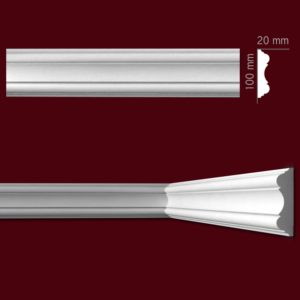"No can do"
Installation of plaster stucco often raises concerns. Convinced that the specialist's concerns are justified, the client succumbs to the pressure of his arguments, which results in the choice of plastic, Styrofoam or polyurethane stucco, which is much lighter and, in their opinion, easier to install. However, after a few years, the effect of the previously installed stucco no longer meets the customer's expectations. The joints are starting to become visible, the stucco is deformed in places. Unlike plaster stucco, the one made of styrofoam or polymeric foam can no longer be repaired. Despite their previous concerns, they are finally convinced to replace it with plaster stucco. Which, unfortunately, involves increased costs and repeated renovation.
However, the situation is slowly changing and the number of specialists is increasing. We also have a professional team that will meet even the most demanding customers. We offer stucco installation throughout Poland and Europe. Accurate and fast. Our best installers will meet any challenge.
Our company has a professional installation team with several years of experience gained both in large facilities (hotels, banquet halls, palaces) and in ordinary apartments and houses. If you are interested, please contact us to agree on the scope of installation and prepare a quote
Please contact us for more information or to receive a quote for the delivery and installation of your own stucco project.
Installation of plaster stucco – DIY - Can I handle it?
However, many of you would like to install the stucco yourself. You are worried that you will not be able to install plaster stucco. If you have a knack for renovations or minor modifications, you will certainly be able to handle this as well.
Here is a short instruction. How to install ceiling strips (facets):
- We check the height of the selected strip (in the catalog/on the website) and measure this value on the wall.
- Height of the strip on the wall | The width of the strip on the ceiling
- We place all the strips in the box (the ceiling will be at the bottom of the box). Cut the strip at an angle of 45º with a wood saw. We measure the necessary length of the strip and cut off the other end.
- We glue the strips using plaster putty SEMIN CE78 1 hour, which starts setting after 1 hour. The consistency of the plaster should be densely plastic. The strip should be pressed firmly against the wall and ceiling so that the glue flows inside between the wall, ceiling and strip.
- We drive a steel nail into the designated assembly line so that the strip does not slide down.
- Remove excess glue with a spatula. We fill any gaps in glue with the excess glue collected.
- Particular attention should be paid to joining the strips together and carefully connect this joint with glue. Then wipe off the slight excess of glue with a sponge moistened with water.
- In the case of installing larger and heavier strips, we additionally pin the strips to the ceiling or wall with quick installation pins, approximately every 1.5 m.
- We putty the joints with soft gypsum plasters so that they can be easily sanded without disturbing the structure of the glued strip.
- Particular attention should be paid to the corners and joints of the strips, maintaining the shape of the polished strips.
- After drying, we sand.
- We sand with an abrasive cloth first with a thickness of "100" and finally with a thickness of "150".
- Before painting, the whole thing must be primed. You can paint by hand with a brush or spray.
Do you have a problem with installation, do you need advice? We are at your disposal, we will advise you and help you. > contact















